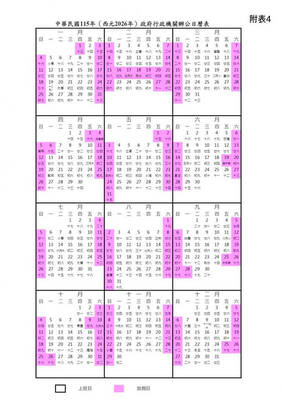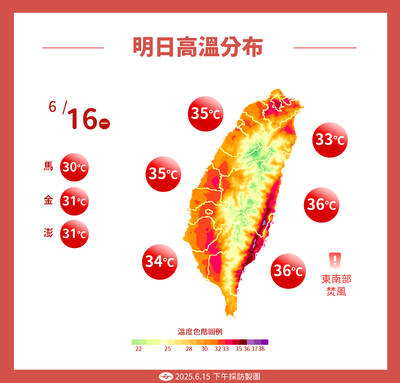The average monthly wage for new graduates last year increased by 2.9 percent from a year earlier to NT$35,000, while the gender wage gap among first-time employees shrank to 8 percent, the Ministry of Labor said yesterday.
Female first-time workers had a base wage of NT$34,000, or 92 percent of the NT$37,000 base wage for male first-time workers, the ministry said, adding that the gap dropped 2.3 percentage points from 2022.
However, among first-time workers with a master’s degree, women earned NT$45,000, compared with NT$52,000 for men, ministry data showed.

Photo: Taipei Times
The reason for the greater gap for those with master’s degrees was that about 61 percent of men with graduate degrees had studied information science, engineering or related subjects, while the rate was only 24.8 percent for women, the ministry said.
The average wage for people in their first job was NT$35,000, up 2.9 percent compared with 2022, the ministry said, adding that the amount was only 72.7 percent of the monthly average wage of fulltime workers in the industrial and service industries.
First-time workers with at most a high-school education earned NT$28,000, college graduates earned NT$33,000 and people with graduate degrees earned NT$49,000 on average, the data showed.
The data showed that 23.4 percent of first-time workers started at base wage level, down 0.7 percentage points from 2022.
The data showed that 58.3 percent of first-time workers starting on a base wage were those with high-school or equivalent education, while 23.9 percent were college graduates and 4.4 percent had graduate degrees.
Among those with at most a college degree, first-time workers last year in the medical and social welfare sectors had the best monthly wages, at NT$38,000, with those in the education sector second at NT$37,000, the data showed.
Among people with master’s degrees, first-time workers in the information technology sector earned the highest wages at NT$57,000, with construction second at NT$55,000, the data showed.
The manufacturing, retail and wholesale industries had the most first-time workers, at 18.4 percent, while the medicine and social welfare industries were second at 11.84 percent, the data showed.
The data showed that 9.1 percent of first-time workers were in the specialized and technical services industries, 8.1 percent were in the hospitality industry and 7.8 percent were in the education industry.

Taiwan is to have nine extended holidays next year, led by a nine-day Lunar New Year break, the Cabinet announced yesterday. The nine-day Lunar New Year holiday next year matches the length of this year’s holiday, which featured six extended holidays. The increase in extended holidays is due to the Act on the Implementation of Commemorative and Festival Holidays (紀念日及節日實施條例), which was passed early last month with support from the opposition Chinese Nationalist Party (KMT) and Taiwan People’s Party. Under the new act, the day before Lunar New Year’s Eve is also a national holiday, and Labor Day would no longer be limited

COMMITMENTS: The company had a relatively low renewable ratio at 56 percent and did not have any goal to achieve 100 percent renewable energy, the report said Pegatron Corp ranked the lowest among five major final assembly suppliers in progressing toward Apple Inc’s commitment to be 100 percent carbon neutral by 2030, a Greenpeace East Asia report said yesterday. While Apple has set the goal of using 100 percent renewable energy across its entire business, supply chain and product lifecycle by 2030, carbon emissions from electronics manufacturing are rising globally due to increased energy consumption, it said. Given that carbon emissions from its supply chain accounted for more than half of its total emissions last year, Greenpeace East Asia evaluated the green transition performance of Apple’s five largest final

Taiwan is to extend its visa-waiver program for Philippine passport holders for another year, starting on Aug. 1, Minister of Foreign Affairs Lin Chia-lung (林佳龍) said on Friday. Lin made the announcement during a reception in Taipei marking the 127th anniversary of Philippine independence and the 50th anniversary of the establishment of the Manila Economic and Cultural Office (MECO) in Taiwan, the Ministry of Foreign Affairs said. The decision reflected Taiwan’s commitment to deepening exchanges with the Philippines, the statement cited Lin as saying, adding that it was a key partner under the New Southbound Policy launched in 2016. Lin also expressed hope

Temperatures in New Taipei City’s Sindian District (新店) climbed past 37°C yesterday, as the Central Weather Administration (CWA) issued heat alerts for 16 municipalities, warning the public of intense heat expected across Taiwan. The hottest location in Taiwan was in Sindian, where the mercury reached 37.5°C at about 2pm, according to CWA data. Taipei’s Shilin District (士林) recorded a temperature of 37.4°C at noon, Taitung County’s Jinfeng Township (金峰) at 12:50 pm logged a temperature of 37.4°C and Miaoli County’s Toufen Township (頭份) reached 36.7°C at 11:40am, the CWA said. The weather agency yesterday issued a yellow level information notice for Taipei, New